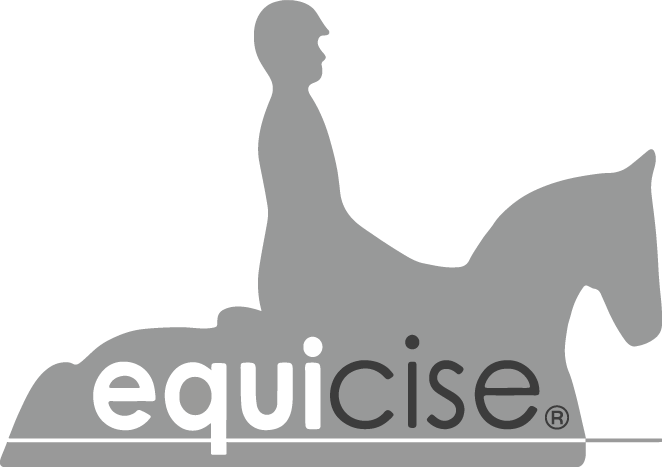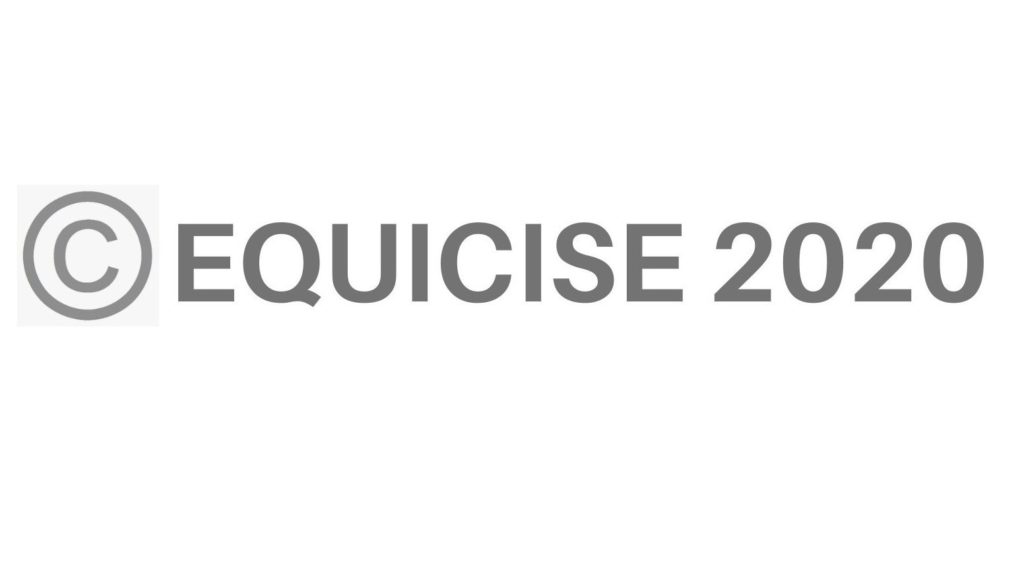18 Jun 3. Improving your lower body position
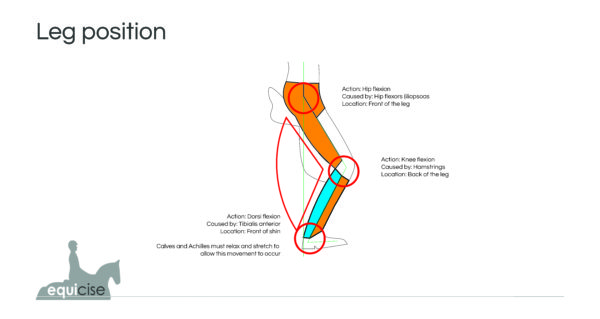
As we have already discussed in Article 2, your ear, shoulder, hip and heel should all be in a straight line if viewed from the side, but a common fault is to position the leg too far forward, such that you can see your toe if you look down. This means you are bound to be behind your horse’s movement as you will be sitting on the back of the saddle, exerting more pressure on its back than is needed or desirable. And if you then lean further forward to try to achieve a more balanced position – as many riders do – you will exacerbate the problem. In fact, the correct leg position will enable increased stability.
Instead, you should relax your thighs which will allow your heels to become aligned with your hips. This may not come naturally – long, relaxed thigh muscles require both a stretch in the hip flexor muscles and strength in the hamstring muscles. Only if all your joints are relaxed will your lower leg be able to flex up and down in rhythm with the horse’s movements whereas tightening your hip muscles, gripping with the inner thighs, squeezing your knees, locking your ankles or tightening your toes will prevent you from doing so.
Y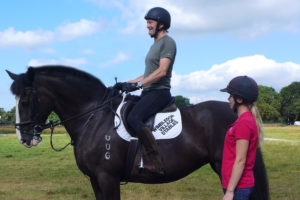 ou should be sitting in the middle of the saddle, with your legs and stirrups at an equal length, while a line through the middle of your chin, breastbone, belly button and pubic bone should be vertically aligned with the horse’s spine and breastbone. Weight distribution – ensuring you are sitting evenly on both seat bones – can be challenging for many riders (we will discuss in more detail in a future blog). As with the upper body, you may think you are sitting in the perfect position, but what may feel correct is to the rider often not when viewed by an independent observer, so you should check with your instructor. If you need to change the way you sit, you will have to re-educate your body until the correct position, which may initially have felt odd, comes to feel normal to you and you no longer have to think about it.
ou should be sitting in the middle of the saddle, with your legs and stirrups at an equal length, while a line through the middle of your chin, breastbone, belly button and pubic bone should be vertically aligned with the horse’s spine and breastbone. Weight distribution – ensuring you are sitting evenly on both seat bones – can be challenging for many riders (we will discuss in more detail in a future blog). As with the upper body, you may think you are sitting in the perfect position, but what may feel correct is to the rider often not when viewed by an independent observer, so you should check with your instructor. If you need to change the way you sit, you will have to re-educate your body until the correct position, which may initially have felt odd, comes to feel normal to you and you no longer have to think about it.
Your thighs should be flat against the saddle, with your knees and toes pointing straight ahead. Be aware that if your knees or toes are turned out, you are probably gripping with your calves which will not help your horse, whatever its temperament. To ensure you have the correct lower leg position – which starts at the hip joint – it can be helpful to use your hand to pull back your thigh and reposition it flat against the saddle.
Because it is so important to ensure you are sitting correctly, you should check your position at the start of every ride or lesson and check again if you are having trouble in getting the results you want. Your horse cannot move correctly unless you are also sitting in the right position.
The EQUICISE is an excellent teaching aid for helping you achieve a better lower leg position. You can check whether your body is perfectly aligned by monitoring your position in the mirrors that surround the simulator. Having mirrors on both sides is particularly useful as you can check whether, when you make an adjustment to your lower leg position on one side, your other leg has remained in the correct place. The EQUICISE has three leg sensors on either side of its body and you will be able to see on the screen in front of you if your legs are in the correct position or not. The sensors will only ‘light up’ if your legs are in absolutely the right place (no cheating is possible) and practising on the EQUICISE will help you to improve your accuracy. Feedback from the saddle sensors will also allow you to check your weight distribution. There are many very useful exercises that you can perform on the simulator to improve your lower leg position, many of which it would not be possible to carry out on a real horse. You can work on developing stronger and more accurate leg aids by switching off the leg sensors and practising using your legs with different degrees of pressure — something that you could never do repeatedly on a real horse — making sure that your legs remain stable and your upper body and hands do not move.
If you book a LEG POSITION AND LEG AIDS LESSON on the EQUICISE, you will learn techniques that you will be able to transfer to riding on a real horse. Remember, however, to be patient with yourself as it takes time to retrain your body, so you will need to continue practising, but.you will definitely notice that your horse will be much more responsive as a result.
Practise this on the Equicise simulator
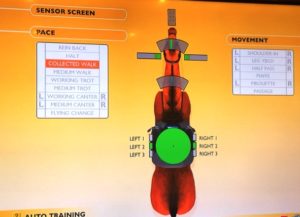
Use 'Instruction Ride' setting. Press reset. Position the mirrors either side of you and pay particular attention to your leg alignment as discussed above. In each of the paces practise gently holding your legs against the '2' position so that it lights up. You will notice how your hip flexors open up and your leg becomes deeper. It may be difficult to achieve a lower heel position to start with but don't worry too much, as with practice you will find this will develop.

